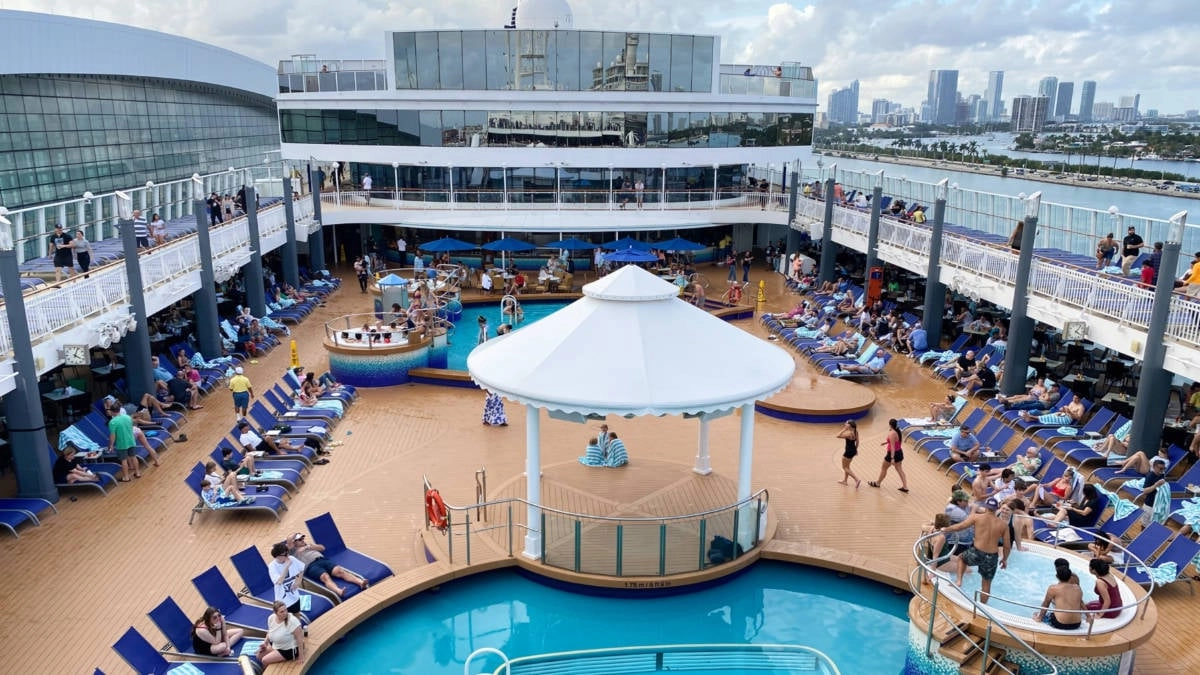
How Many Passengers Can a Cruise Ship Accommodate? Exploring Capacity Limits
Have you ever wondered about the passenger capacities of cruise ships? Today’s vessels vary greatly in size, accommodating anywhere from just 100 guests to over 7,000 passengers, with capacities increasing further when crew members are included. Understanding these numbers can alleviate any concerns regarding overcrowding when planning your cruise.
Passenger Capacity Overview
The cruise industry comprises over 370 ships, with an average capacity of around 3,000 passengers and crew counts typically between 800 to 1,200 members. This crew-to-passenger ratio can fluctuate, particularly on luxury ships which often maintain more staff per guest to ensure high service levels.
For example, larger ships like Royal Caribbean’s Icon of the Seas can host 5,610 passengers at double occupancy and up to 7,600 at maximum capacity. Despite such high numbers possible, cruise lines often struggle to reach their maximum occupancy since it requires selling out every room on the ship.
Categories of Cruise Ships
-
Small Cruise Ships: Catering to between 100 to 1,000 passengers, smaller ships like the Celebrity Flora (100 guests) or Viking Cruises offer intimate experiences that often visit lesser-known destinations.
-
Medium Cruise Ships: These ships generally hold 1,000 to 3,000 passengers, featuring diverse amenities. For instance, Disney Magic accommodates around 2,700 guests, emphasizing comfort along with entertainment.
-
Large Cruise Ships: Holding between 3,000 to 4,000 passengers, this category includes popular cruise lines like Carnival and Norwegian, which boast exciting features, multiple dining options, and onboard entertainment.
-
Mega Cruise Ships: The largest ships can carry over 4,000 passengers. Notables include Norwegian Epic, accommodating 4,100 passengers, and Royal Caribbean’s Wonder of the Seas, capable of hosting up to 6,988 people. These ships are akin to floating cities with countless amenities.
Factors Influencing Capacity
Multiple elements determine how many passengers a cruise ship can carry, including:
-
Gross Tonnage: The overall size and volume of the ship influence its capacity. Larger ships can house more passengers, as seen with Icon of the Seas, which has 248,336 GT.
-
Cabin Count: Most cruise lines base their capacity on double occupancy. However, if larger cabins accommodate more guests, this raises the total capacity further.
-
Safety Regulations: Regulatory bodies impose strict guidelines on passenger transport to ensure safety, often affecting the maximum allowable number of guests on board.
-
Crew-to-Passenger Ratios: To maintain quality service, most cruise ships aim for a crew-to-passenger ratio, typically around 1:2.25, impacting operational capacity.
Capacity Realities on Board
Despite a ship’s potential to sail at full capacity, cruise lines often aim to operate at about 90%. During peak seasons, selling out is common, but some lines may oversell to cover potential cancellations.
Overcrowding is usually manageable due to clever ship designs that distribute guests across onboard venues. Many amenities come with limits on access, ensuring guests are spread out even on busy cruises.
If you’re considering cruising, think about the type of experience you want. Larger ships offer a range of activities and social opportunities, while smaller vessels provide a quieter and more personalized atmosphere, allowing a different perspective on what a cruise can deliver.
Set sail on a voyage of discovery with CruiseShip.net – your ultimate destination for all things cruising! Explore the latest news, insightful reviews, and thrilling cruising adventures from around the globe. Whether you’re a seasoned cruiser or a first-time traveler, CruiseShip.net is your go-to source for expert advice, insider tips, and inspiring stories to fuel your wanderlust. Embark on a journey like no other with CruiseShip.net – where every wave brings new excitement and endless possibilities on the high seas.



Leave a Reply